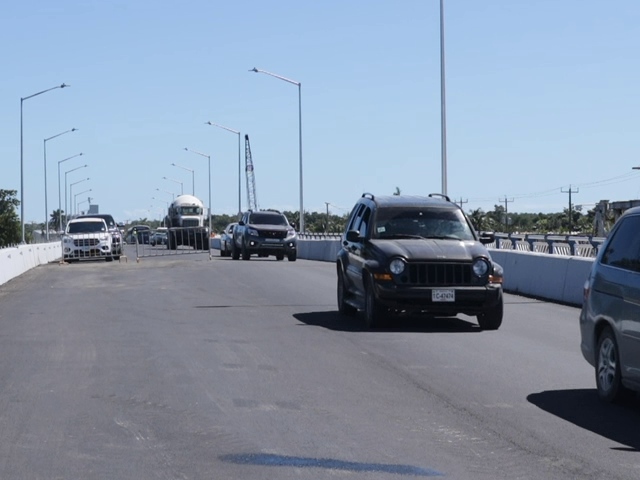MIDH Clears Up Concerns Regarding Haulover Bridge
The Ministry of Infrastructure Development and Housing is responding to concerns raised by motorists traversing the newly-built Haulover Bridge. Several persons who crossed the structure recently have taken to social media to raise concerns, as well as criticize the construction of the bridge, after observing what appeared to be potholes on the surface. This afternoon, Chief Engineer Evondale Moody called us out to that location to explain what is being done from an engineering standpoint and to allay concerns regarding the build.

Evondale Moody
Evondale Moody, Chief Engineer, MIDH
“So if I may start with just giving a basic background of how the bridge is constructed, so that everyone could know and the basic layperson and the local engineers could know exactly what‘s happening. So the bridge itself, the Haulover Bridge is basically approximately five hundred and twenty-eight meters in span and over that span we have approximately twelve piers and two abutments. Each pier and abutment basically have what we call girders on top of them. So just to further explain, if you have one pier, basically those piers would support the girder that we‘re putting on and each pier basically has seven girders on one side and seven on the other side that make a connection at that pier itself. Those girders are placed on what we call bearing pads. The girders cannot interlock because they are reinforced concrete and so we have to allow those girders to expand and contract. So from we reach that level of the bridge we have to leave what is called an expansion joint. And so, on top of the girders, we place what is called a pre-cast deck slab which is three inches thick and then we also place an additional eight inches of reinforced concrete on top of that deck slab to basically create the deck for the bridge itself. So the bridge itself basically has an eleven inch thick reinforced concrete deck slab which is the deck for the bridge. What you are seeing here on top of the bridge is the hot mix asphalt which is basically just a wearing course for the movement of traffic to even move smoother across the bridge. It carries no load, it bears no load and so it‘s just what we call a wearing course.”







Facebook Comments